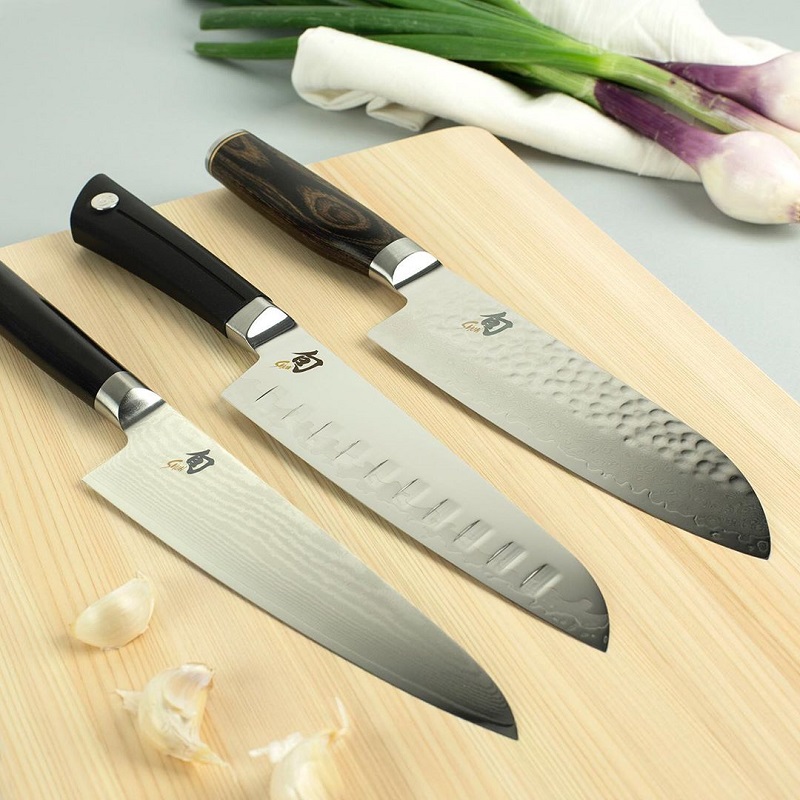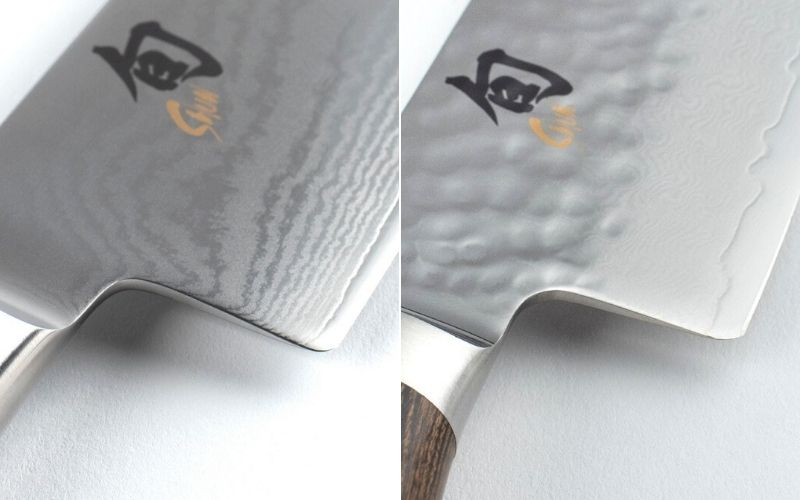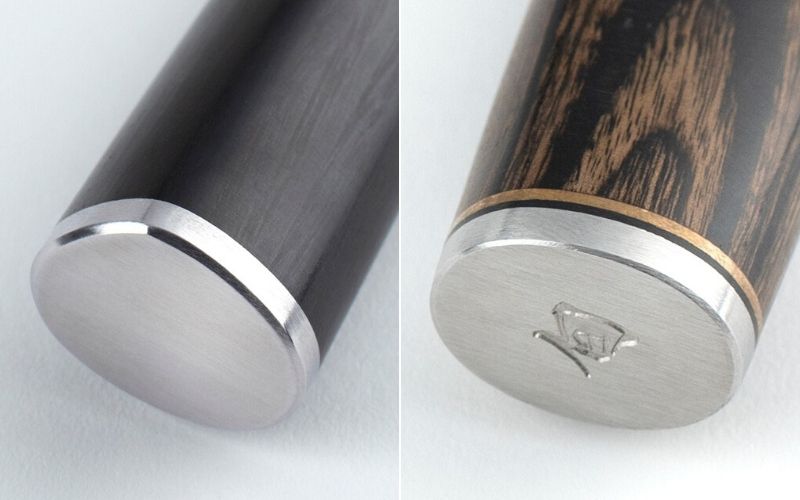
About Shun
Whether you’re a home cook or a professional chef, the brand Shun has undoubtedly crossed your mind and sight at some point. This Japanese knife brand features stunning kitchen knives with a wickedly sharp edge and beautiful Damascus design that puts regular knives to shame.
Each knife is carefully hand-crafted in Japan by master craftsmen. Shun is proudly named after the Japanese culinary tradition of preparing and eating the freshest and finest food at the “shun” moment. This mirrors its craftsmanship as each kitchen knife is crafted to the peak of perfection.
Similarities of Shun Classic and Shun Premier
While Shun offers a wide collection of kitchen knives, the most notable ones are the Shun Classic and Shun Premier collection. Hailed as the best in terms of form and function, home cooks and professional chefs looking to invest in a set of Shun knives are often stuck deciding between the Shun Classic and Shun Premier range.
It is no surprise why they find themselves at an impasse in deciding which to get. Both the Classic and Premier feature the following:
- Hand-forged blades with 68 layers of clad steel and a durable VG-Max cutting core
- Full tang construction with an ultra sharp 16 degree angled blade
- Pakkawood handles with a steel end cap
- Hand-forged in Seki City, Japan
So what is it that actually sets these two collections apart? Below, we’ll look at the key differences to help you identify the most suitable one for your kitchen and food preparation style.
Differences between Shun Classic and Shun Premier

The Blade’s Finish
Shun Classic (Left): The blade of the Classic range is forged with 68 layers of steel surrounding its cutting core, resulting in a wavy Damascus finish. This Damascus finish offers the blade higher stain resistance while providing it with a distinctive appearance that separates it from common kitchen knives.
Shun Premier (Right): Shun’s Premier range of knives are also forged with 68 layers of steel around its cutting core. However, this range takes it up a notch with its Tsuchime (“hammered”) finish, resulting in the shallow cavities found on the blade’s surface. This finish offers the same stain resistance found in the Classic range, but with added easy release to make your cutting tasks effortless and to provide maximum hygiene.

Handle Design
Shun Classic (Left): Shun Classic’s Pakkawood handle is commonly found in a deep ebony colour while it’s Classic White collection features a light blonde Pakkawood handle finished with a steel end cap. Its appearance allows it to meld perfectly with the minimalistic look of a modern kitchen, be it a bright or a dark theme.
Shun Premier (Right): Shun Premier’s Pakkawood handle showcases an earthy walnut colour that denotes elegance and luxury. It is finished with an engraved steel end cap and a brass ring just before the cap. It also offers the user a comfortable grip and looks stunning in both modern and traditional kitchen settings.

Handle Shape
Shun Classic (Left): The handle on Shun Classic’s knives are asymmetrical and straight compared to its Premier counterpart. Its traditional Japanese D-shaped grip offers enhanced grip and stability, perfect for vigorous kitchen tasks. This also means that right-handers will find Shun’s Classic range to be a more comfortable choice. Its handle is even leaner than Shun Premier’s knives, making it great for individuals with smaller hands.
Shun Premier (Right): Shun Premier’s knife handle is symmetrical with a round grip. It is slightly contoured from the blade to the capped end. These characteristics allow both left and right-handers to comfortably use it over long hours in the kitchen without the dreaded hand fatigue. It is also favoured by individuals with large hands due to the handle’s thicker build.
Now that we've got the differences down and clear, selecting your new set of Shun knives will be a much easier task. With the new addition of the Shun Classic White collection in Everten, you now have the choice to select between the dark handle of the Shun Classic, or the blonde handle of the Shun Classic White.
Next Read: Shun Knives: What Makes Them Superior?
